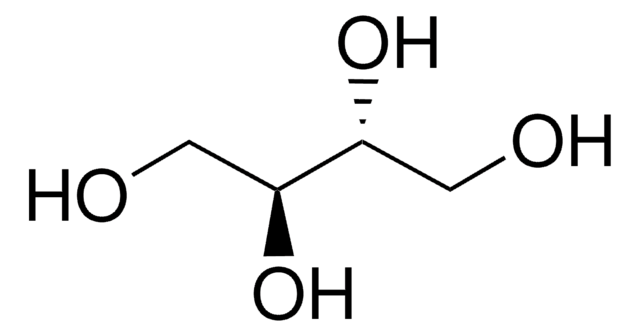About This Item
Recommended Products
Quality Level
Assay
≥99% (GC)
form
crystalline
crystals or chunks
powder
sweetness
1 × sucrose
color
colorless
mp
94-97 °C (lit.)
solubility
water: 642g/l at 25 °C (77 °F )
SMILES string
OC[C@@H](O)[C@H](O)[C@@H](O)CO
InChI
1S/C5H12O5/c6-1-3(8)5(10)4(9)2-7/h3-10H,1-2H2/t3-,4+,5+
InChI key
HEBKCHPVOIAQTA-SCDXWVJYSA-N
Looking for similar products? Visit Product Comparison Guide
General description
Application
- as a standard for high performance liquid chromatography
- in analysing antibacterial activity on oral biofilms
- for thermodynamic data and densities measurement
Biochem/physiol Actions
Other Notes
Storage Class Code
11 - Combustible Solids
WGK
WGK 3
Flash Point(F)
Not applicable
Flash Point(C)
Not applicable
Personal Protective Equipment
Certificates of Analysis (COA)
Search for Certificates of Analysis (COA) by entering the products Lot/Batch Number. Lot and Batch Numbers can be found on a product’s label following the words ‘Lot’ or ‘Batch’.
Already Own This Product?
Find documentation for the products that you have recently purchased in the Document Library.
Customers Also Viewed
Our team of scientists has experience in all areas of research including Life Science, Material Science, Chemical Synthesis, Chromatography, Analytical and many others.
Contact Technical Service






